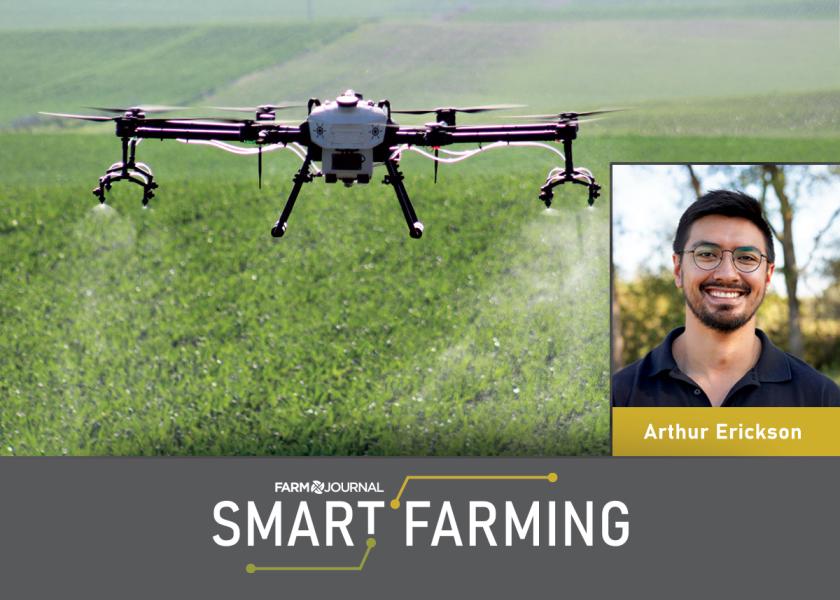Three’s A Crowd: Hylio Secures FAA Drone Swarm, Night Flight Exemptions

Ag drone outfit Hylio (Houston, Texas) has received an unprecedented “all clear” from the FAA: an exemption allowing the company’s application drones to be “swarmed" or flown in concert with up to three drones controlled by a single operator, as well as allowing spray missions to be flown after sundown.
Why it Matters
Standard U.S. commercial drone regulations set forth under the FAA’s Part 107 certification limit operations to one pilot-in-charge per drone (plus a visual observer) and only flying between sunup and sundown. Chemical application drones are jointly regulated under Part 107 (pilot) as well as FAA 14 CFR Part 137 (service provider). A pesticide applicators license is also required.
Clearly, this development unlocks more efficient and scalable workflows for farm work (one of Hylio’s spray drones can cover up to 50 acres per hour), but it also has additional implications worth exploring.
“It's precedent setting,” says Arthur Erickson, CEO and cofounder. “Essentially what the FAA does after this is…people can cite Hylio's first exemption, this one, and be like, because Hylio can do that, we're showing that we also have the same technical capabilities, therefore we should be able to do that.”
Technology has certainly evolved to the point of enabling autonomous swarms. Erickson says part of the buildup to that was a literal accounting for every single imaginable scenario (good or bad) under the sun.
“That's redundant radar systems, that's redundant GPS, that's redundant IMUs in the flight controller, and redundant hardware to make sure that if anything goes wrong during a flight, there's another system that can pick up and just make sure the drone does what it needs to do,” he explains. “It's all about engineering that safety margin into the products and the machines themselves.”
By swarming three of Hylio’s AG-230 spray drones (which can also apply dry dispersible products and cover crop seeds), for example, a skilled operator can now cover 150 acres per hour, which Erickson says is comparable to a large pull-behind sprayer in some cases.
“It's unlocking the ability for these drones to actually go toe to toe with traditional large equipment, which is what we've been waiting for in this industry,” he adds.
Advice for farmers
Judging from the winter farm trade show circuit, it seems clear there are more options available to farmers today when it comes to drone application than perhaps ever before.
Erickson advises interested farmers to do their homework and verify paperwork/licenses before committing big dollars to a drone application service provider.
“You also need to educate yourself on best practices for applying by drone, because what you want to do is make sure you don't have someone who's going out there with the drones and cutting corners,” he cautions. “And by that, I mean, most of these guys are making money based on acres per hour.
“Some of these pilots, and this isn't just with drones, they'll go out there and they'll potentially do swaths that are too wide for what the effective swath is. What that can end up doing is, leaving weaker coverage at the edges of those swaths, right? Because there's not enough overlap and they're not getting enough droplets across the entire swath.”
What Could the Future Hold?
It’s a question that Erickson encounters often throughout his travels: just how big can application drones get? Can they ever replace conventional self-propelled ground rigs?
“Drones are going to get bigger to a certain point, but then they're going to level out because beyond that point they become overly cumbersome and expensive,” he says. “You’ll start to see the same economic problems that you see with helicopters, which is they're way too expensive, the insurance is way too high, they're dangerous, they're hard to maintain and repair, and hard to transport."
Erickson sees the ceiling for capacity coming in around the 1,000-pounds/40-60 gallon per drone mark, eventually.
“Then you're going to get multiples deployed in a field instead of just one giant, 200-gallon drone,” he says. “I think that's more practical for manufacturers and the buyers and users themselves.”







